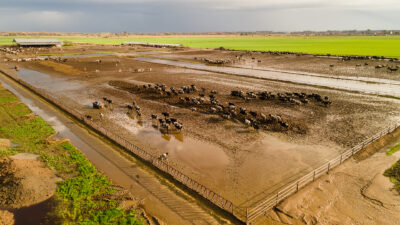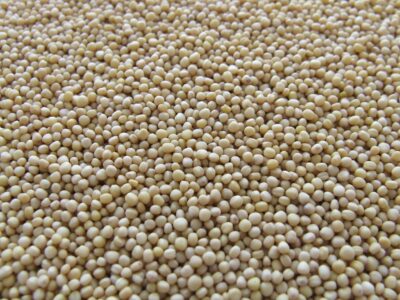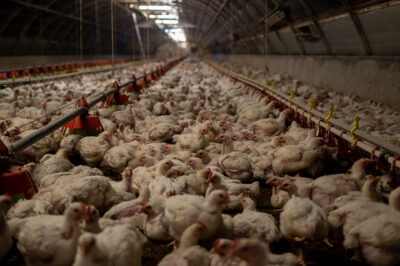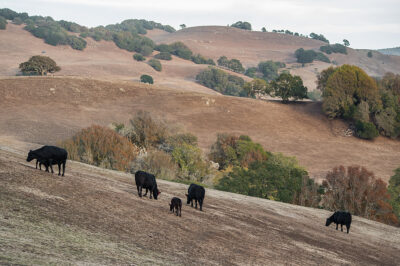Land, and specifically soil, is an invaluable resource that supports all life on Earth. Without healthy soil plants die off, animals lose their homes, and crops cannot be grown. Despite the importance of soil to the health and wellbeing of people, animals, and the planet, the state of soil globally has become critical, with one-third of the world’s soil considered either moderately or highly degraded.
WHAT IS LAND DEGRADATION?
Land degradation is the process by which land, and specifically soil, loses its ability to support life. In extreme situations, land degradation can lead to desertification.
LAND DEGRADATION: AN OVERVIEW
Land degradation is one of the most pressing environmental issues facing us today. Characterised by a decrease in the ability of soils to produce food or other resources, land degradation is impacting millions of people around the world. Every year 22 billion tonnes of fertile soil is disappearing. Those most heavily impacted include rural communities, small farmers, and the poorest people globally.
Degradation can take several forms. It occurs when soil is compacted and water is not able to move through the soil as it should. This often happens as a result of agriculture. Another form of degradation takes place when forests are cut down and the land is converted from wild habitat into farmland. This type of degradation reduces soil nutrients and also lowers the land’s ability to hold carbon by 50 to 75 per cent, fuelling climate change. Both an impact and a driver of degradation, biodiversity loss can damage the delicate balance of an ecosystem and lead to severe and lasting consequences.
DEGRADED AREAS WORLDWIDE
The two continents hardest hit by land degradation are Africa and Asia. In 2021, up to 65 per cent of the usable land in Africa was degraded in some form. Though efforts have been made to slow down degradation and reclaim land that has already been degraded, as of 2021 4 million hectares of forest were still being lost annually. With 60 per cent of people in Africa depending on the land and forests for survival, the situation is dire.
Meanwhile, more than 40 per cent of the soil in China is degraded, with the government making efforts to slow the spread of disturbed and unusable soils and reclaim some of the impacted land.
WHAT ARE THE CAUSES OF LAND DEGRADATION?
Most land degradation is caused by human activities. In recent centuries degradation has accelerated considerably due to farming animals, large-scale weather events worsened by climate change, and a variety of other factors.
AGRICULTURAL DEPLETION OF SOIL NUTRIENTS
When land is repeatedly used to grow the same crops, with no attention given to soil health, the soil quickly loses nutrients. To compensate for this, pesticides and fertilisers are applied to the soil, which in turn cause further problems for local wildlife and the environment.
CLIMATE CHANGE
Climate change and land degradation represent a vicious cycle, with land degradation contributing to climate change and vice versa. Climate change is driving the occurrence of more severe weather phenomena. The contribution of droughts to land degradation is particularly severe. A reduction in rainfall allows soil to dry out, which allows it to be blown away more easily.
DUMPING OF NON-BIODEGRADABLE WASTE
Illegal dumping of waste, which is common at the edges of forests and in ditches, can contribute to land degradation by polluting soils and water. The presence of illegal dumping has also been linked to an increased presence of non-native plant species, which can contribute to land degradation.
EXPOSURE OF NAKED SOIL
When vegetation is cleared to make way for farmland, or fields are left unplanted, soil is exposed. The roots that once anchored the soil in place are removed, allowing more soil to be swept away by the wind or washed away when it rains. The loss of the nutrient-rich topsoil can contribute to land degradation, as it makes it more difficult for the land to support plants and other life.
INAPPROPRIATE IRRIGATION AND OVERDRAFTING
Irresponsible and inappropriate irrigation and overdrafting of water that runs down groundwater reserves can lead to an increase in salinity in the soil, contributing to land degradation.
INCREASE IN FIELD SIZE
Larger fields are generally used in more intensive agriculture, and they leave landscapes more exposed to the elements, as well as allowing more soil to be washed down slopes. Smaller fields are associated with higher biodiversity.
OVERGRAZING
Overgrazing reduces vegetation cover, exposing the soil and leaving it unanchored by plant roots. The hooves of farmed animals grazing on the land can also compact the soil, disrupting the natural systems and tunnels made by ants, worms, fungi and other organisms that would normally run through the ground. This in turn makes it more difficult for vegetation to grow.
LAND CLEARANCE
When land is cleared and trees and shrubs are removed, whether for farmland, construction or some other purpose, there are no longer roots to help hold soil in place, and such clearances disrupt ecosystems and lead to a loss of biodiversity.
FARMED ANIMALS
Perhaps one of the best examples of farmed animals contributing to land degradation is that of the Amazon rainforest. Cattle ranching is having a devastating impact on the forest, with increasing herd sizes leading to an increase in land degradation as the forest is cleared to make way for more cattle.
LOSS OF SOIL CARBON
Land degradation can lead to a 75 per cent loss in soil’s ability to store carbon. Not only does the presence of carbon in the soil contribute to its fertility and capacity to support life, but when that carbon is released it contributes to atmospheric levels of carbon dioxide, worsening climate change.
MONOCULTURE
Repeatedly planting the same crops without cover crops to protect soil when exposed, fallow periods, or nitrogen-fixing crops to help naturally replenish nutrients places an excessive burden on soil, as nutrients are extracted without time being given for the soil to recover.
QUARRYING AND MINING OF STONE, SAND, ORE, AND MINERALS
The extraction of natural resources from the ground in the form of quarrying and mining has profound negative impacts on soil and land health. In the case of stone quarrying, fine dust particles are produced during the process. These dust particles make their way over nearby agricultural land where they settle and negatively impact the fertility of the soil. Mining strips topsoil, disturbs the soil’s structure, allows nutrients to be lost from the exposed land, and can lead to pollution.
URBAN SPRAWL AND COMMERCIAL DEVELOPMENT
As cities expand outwards instead of upwards, more and more land is necessary for development. This pushes farmers to clear more land to grow food and places a strain on the health of the land. This strain makes the land more susceptible to being degraded.
VEHICLE OFF-ROADING
Off-roading contributes to the compaction of soil and destroys the native plant life in an area. Both of these can contribute to land degradation.
WHAT ARE THE EFFECTS OF LAND DEGRADATION?
The impacts of land degradation are severe and long-lasting. Lost soil nutrients impact how much food can be produced, the species that can live in an area, personal incomes of people who depend on the land, and local economies that these people’s livelihoods are part of. Degradation also increases the severity of many other ecological events, reducing the resilience of landscapes and communities.
A DECLINE IN THE PRODUCTIVE CAPACITY OF THE LAND
Though extensive efforts may be made to reclaim land or stop land degradation, there are often lasting impacts on the productive capacity of the land. With land degradation having the heaviest impact on poor, rural communities, preventing further degradation from occurring becomes even more essential in order to support livelihoods.
IMPACTS ON HUMAN LIVELIHOODS
An estimated 1.5 billion people around the world depend on land that has been degraded for their living. As land is degraded, it requires more attention in order to produce a yield adequate to live on. If land degradation gets bad enough, those that once depended on the land may choose to migrate to other areas. This can lead to the clearing of new land, thus starting the process of land degradation in a new area.
LOSS OF BIODIVERSITY
Biodiversity is the range of all plant and animal life in an area. When the quality of soil is compromised due to degradation, the land is no longer able to support the flora and fauna it once did. This leads to a loss of biodiversity, which in itself can be considered a type of land degradation. For example, overhunting or overgathering a particular plant can have lasting impacts on the function and health of an environment by disturbing the sensitive balance of its ecosystem.
SHIFTING ECOLOGICAL RISK
Land degradation represents one of the most critical environmental issues of our time. The loss of soil health and quality places everyone at risk. Continued degradation of the land further contributes to climate change and biodiversity loss.
HOW TO RESTORE DEGRADED LAND
There are many methods that can be employed to restore degraded land and prevent land from being further degraded. Some examples include reintroducing trees and other plants, using regenerative methods to produce food, including opting out of tilling and other activities that harm soil and removing large areas of monoculture. When we change our diets to plant-based, a lot less land needs to be cultivated, meaning vast tracts can be returned to the wild.
CONCLUSION
Whether we’re aware of it or not, land degradation has the ability to severely impact us. Like water and air, we all depend on healthy soil in order to survive. Healthy soil allows food to be grown and forests to thrive, and acts as a home for vast numbers of organisms. Unfortunately, land continues to be degraded due to outdated agricultural practices, including farming animals, and poor management.





